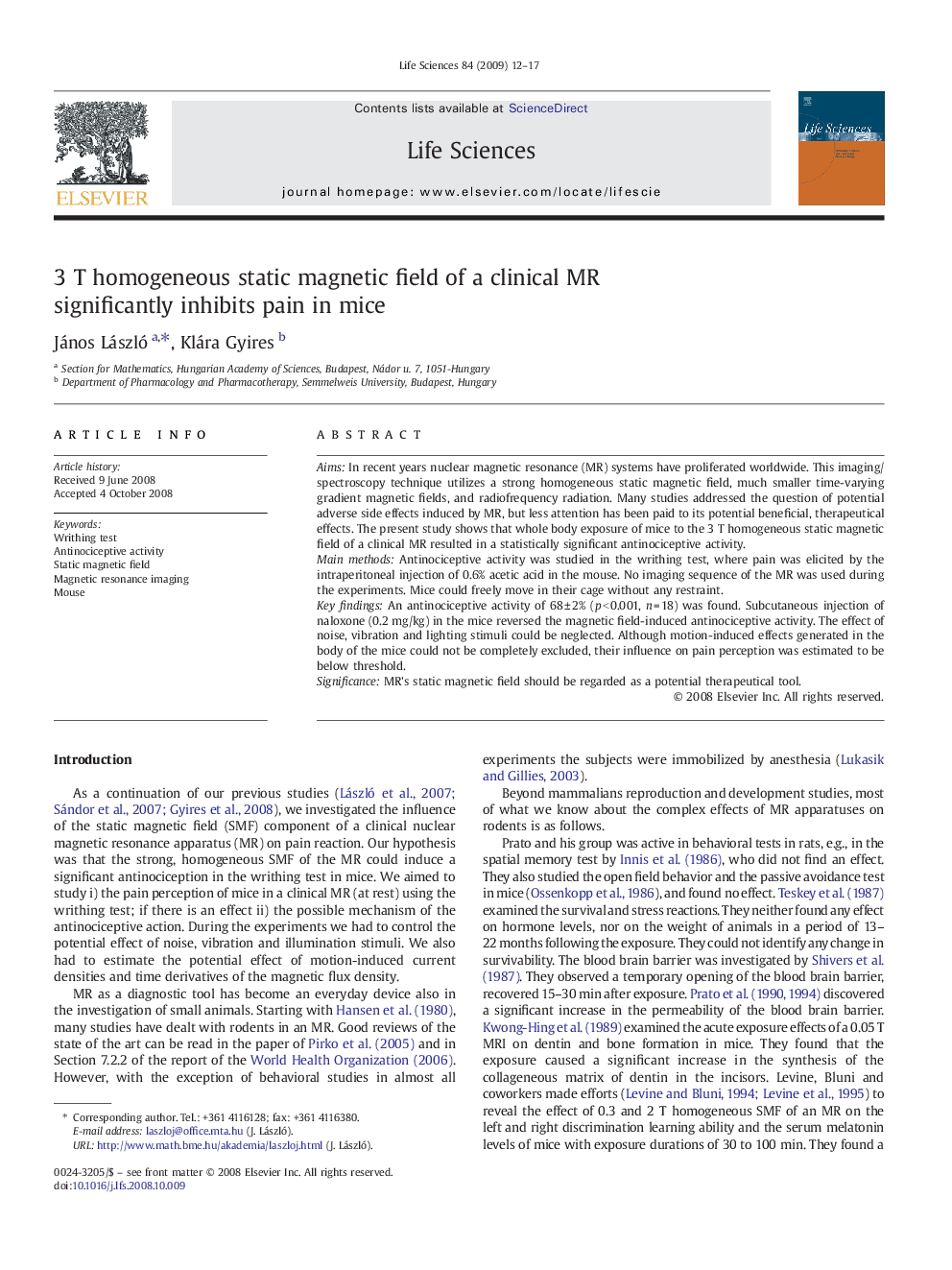| Article ID | Journal | Published Year | Pages | File Type |
|---|---|---|---|---|
| 2553308 | Life Sciences | 2009 | 6 Pages |
AimsIn recent years nuclear magnetic resonance (MR) systems have proliferated worldwide. This imaging/spectroscopy technique utilizes a strong homogeneous static magnetic field, much smaller time-varying gradient magnetic fields, and radiofrequency radiation. Many studies addressed the question of potential adverse side effects induced by MR, but less attention has been paid to its potential beneficial, therapeutical effects. The present study shows that whole body exposure of mice to the 3 T homogeneous static magnetic field of a clinical MR resulted in a statistically significant antinociceptive activity.Main methodsAntinociceptive activity was studied in the writhing test, where pain was elicited by the intraperitoneal injection of 0.6% acetic acid in the mouse. No imaging sequence of the MR was used during the experiments. Mice could freely move in their cage without any restraint.Key findingsAn antinociceptive activity of 68 ± 2% (p < 0.001, n = 18) was found. Subcutaneous injection of naloxone (0.2 mg/kg) in the mice reversed the magnetic field-induced antinociceptive activity. The effect of noise, vibration and lighting stimuli could be neglected. Although motion-induced effects generated in the body of the mice could not be completely excluded, their influence on pain perception was estimated to be below threshold.SignificanceMR's static magnetic field should be regarded as a potential therapeutical tool.
